Purposely leaving the 'margin'
IdaClaire
6 years ago
last modified: 6 years ago
Featured Answer
Comments (11)
Bunny
6 years agoIdaClaire
6 years agoRelated Discussions
Cultivated plant with palmate leaves, white margins
Comments (14)Hi all! Thanks for your suggestions. Fairly certain it is not a hellebore, unless it is a species I am unfamiliar with (these include helleborus orientale, h. niger and H. foetidus). The leaves are considerably smaller as is the overall height (only about 6 inches for this plant). Hellebore is also evergreen in our area and I believe this died back in the fall. Lastly, I have never seen a hellebore with white margins and as there were no apparent seed pods... hellebore pods remain on the plant and are simply too large to miss.... I think I can pretty much eliminate that one from the possibilities. As for it being some type of cinquefoil, I am also not convinced. Though the leaf and plant size is closer (than to the hellebore), each of the leaves on this plant seemed to emerge on it's own stem. Leaves were also smoother than potentilla and less reminiscent of a strawberry and were not noticeably pubescent. Could I have possibly finally stumped this group? :) I'm attaching a closer look at the leaf to see if we can change that....See MoreNecrotic leaf margins (pictures)
Comments (10)Plants have responses to internal (biotic) & external environmental (abiotic) triggers that involve the different ion salts' homeostasis. There is an enzyme complex (NADPH-oxidase) that senses oxygen biochemistry. Special oxygen molecules then develop with the reactive capability to mediate cell signals. An important regulator of the growth factor (GF) signal is a Copper/Zinc oxygen molecule (Cu,Zn-SOD). Chloroplasts are affected by abiotic & biotic stress influx of Calcium (Ca++). This Ca++ ion stimulates another reactive oxygen species (H2O2) to be produced, which diffuses into surrounding cells as a messenger to initiate physiological action. H202 is Hydrogen Peroxide & the Ca++ ion can instigate two opposite types of regulation (ie: positive = generate H202 by activating NADPH & even indirectly producing more NADPH; & negative = stimulate Catalase the antagonist to H202, which breaks down & sets loose an unstably charged oxygen molecule). What the leaf margin pictures show is oxidative damage on the fringe of leaf growth. A lay explanation is that these are some burned out dead (necrotic) cells. This is consistent with Carolyn's experience that the plants seem to grow out of this phase , and that this is not a plant disease. In other words the season progresses, the plant adapts & it sorts out the biochemistry it has to live with. The pronounced occurrence in some tomato varieties, & even their cotyledons, is quite probably due to a minor genetic mutation. Those Reactive Oxygen Species (ROS: like superoxide O2-- & H202 hydrogen peroxide) control some gene expression of proteins that signal the plant (or cotyledon) what to do in it's cells. Let's go down to the roots for a possible clue to intervention .... Potassium(K) metabolism is important for feeder root function. A deficiency in K+, whether from lack or lock out by other ions, loads up ethylene in the root tissue. In case of acute K+ ion deprivation the roots back up system driver is H202. Hydrogen Peroxide activity in this situation is focused next to the root zone of elongation. In other words H202 boosts the genetic activity that makes K+ ions get moving. Since nutrient salt uptake is ionic the net effect of getting feeder roots to metabolize K ions is to break apart the log jam of locked up ions. The plant's roots can then send adequate Cu,Zn & Ca to the leaf. (Remember, roots feed ion by ion & nobody mentioned their soil analysis - just that they tried to fertilize responsibly.) A soil drench of the root zone with 1-2 Tablespoons of 3% Hydrogen Peroxide diluted in a gallon of fresh water can be used to try to circumvent the continuation of new leaf necrosis. You will find internet recommendations for higher gardening concentrations & foliar application rates, if inclined....See MoreHahnii Silver Marginated - rot
Comments (19)Sounds good Lennie, I'm glad you found some potential solutions to those bad spots. Just out of curiosity, what does the bottle of Garden Safe Fungicide say is the active ingredient? Could be the same neem oil that's in your other spray. I can't identifiy the close-up you picture here, is this the same Silver Hahnii from your initial pics? If so, that's a remarkable recovery from the rotted mess you had before. I think you're gonna make it to spring and summer. Stush, a few years ago I bought 6 Golden Hahnii's at one time since they were only $3 each at Walmart. I figured at least one would make it for a few years... don't have a single one right now. That said, I wasn't using a fungicide or insecticide, and now that I'm focusing on using one or both religiously, I think I might be able to grow it. Next one I find, I'll buy and give it one more shot, maybe Bayer's is the answer like it has been for you. I'm slugging it over the entire plant with no ill effects, thinking direct contact with the fungus might have a quicker effect. But again, I'm diluting by half. Think I'll go full-strength on the soil only, thanks for the tip. I've been really scratching my head about Golden Hahnii since trif. Craigii is the same thing only in a full, trifasciata-sized plant, and I have very little trouble with it. My largest leaf so far is about 8 inches, but it's devilishly slow. Maybe as a group Hahnii's are a bit more sensitive to fungi and such. Interesting about your Futura Asahi, I'm familiar with the name but not how it looks. It's not in Chahinian's early book The Trifasciata Varieties, so it's a newer one. ----- Aha, I took the time to check Google and found your picture posted here back around June last year. I used to have Morgenstern's Futura Aurea but lost it many years ago. It appears to me that Golden Hahnii, Futura Aurea, and Craigii are the same variegates within each size-class of sansevieria, short, mid-range and tall. I think Juan Chahinian has talked about this phenomenon before, at some point every form of variegation will appear in every size-class of sansevieria. Interesting stuff!! My email is chammer@cfl.rr.com or bluesea14808@yahoo.com. Rainy here today and warmer, yesterday was brisk and windy in the 60s but I ain't complaining. By mid-March I've usually got clear sailing til next winter. Best, Russ...See MoreShrub with large leaves that have spiny margins
Comments (4)Never has that crazy saw-tooth margin either. Nor is it the same heavy texture. The bud scales becoming red when elongating is characteristic of the photinia. It is the only photinia seen repeatedly in North America that is so robust - if Fraser photinia hadn't become so prevalent there wouldn't be anything at all like it here, except perhaps one or two other comparatively large-leaved species in a few collections - the next largest parted one being the other parent in the (Fraser) cross (P. glabra). http://www.efloras.org/object_page.aspx?object_id=48871&flora_id=2...See Morewritersblock (9b/10a)
6 years agobpath
6 years agoIdaClaire
6 years agolast modified: 6 years agoLars/J. Robert Scott
6 years agonutsaboutplants
6 years agoMDLN
6 years agoroarah
6 years agoseagrass_gw Cape Cod
6 years ago
Related Stories

GARDENING GUIDESWhat's Wrong With My Plant? Leaves Often Hold the Clues
Learn how to identify common plant ailments by reading their leaves
Full Story
DECLUTTERINGDownsizing Help: Choosing What Furniture to Leave Behind
What to take, what to buy, how to make your favorite furniture fit ... get some answers from a homeowner who scaled way down
Full Story
LAUNDRY ROOMSRoom of the Day: The Laundry Room No One Wants to Leave
The Hardworking Home: Ocean views, vaulted ceilings and extensive counter and storage space make this hub a joy to work in
Full Story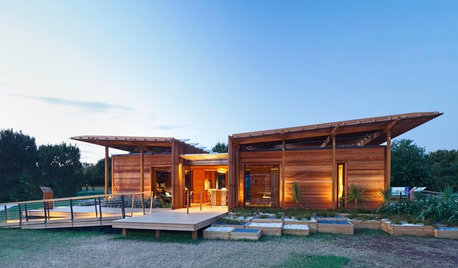
GREEN BUILDINGStudents’ Award-Winning Home Leaves Small Footprint
A cost-effective, solar-powered New Zealand prefab home has good looks to match
Full Story
HOUZZ TV FAVORITESHouzz TV: Life, Love and Purpose Down on the Farm
A Missouri native proves that you can go home again — and discover something entirely unexpected
Full Story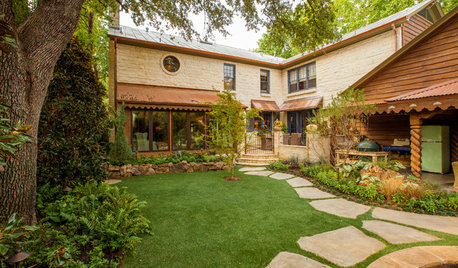
HOUZZ TOURSHouzz Tour: 'Pieced Together With a Purpose' in Dallas
This collected-over-time look comes from antiques, retro pieces and treatments that celebrate age
Full Story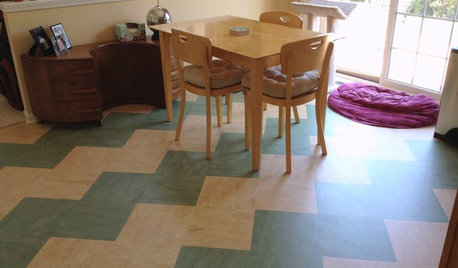
REMODELING GUIDESLinoleum, the All-Purpose Flooring Wonder
Dashing in a rainbow of colors, able to be cleaned with ease and courteous to budgets everywhere, linoleum is a super choice for floors
Full Story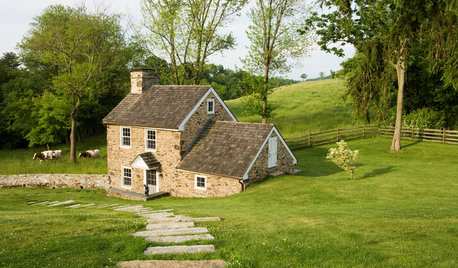
BEFORE AND AFTERSRestoration Rallies a 1790 Stone Springhouse
An old outbuilding gets a new purpose — several purposes, that is — thanks to careful efforts by stonemasons and architects
Full Story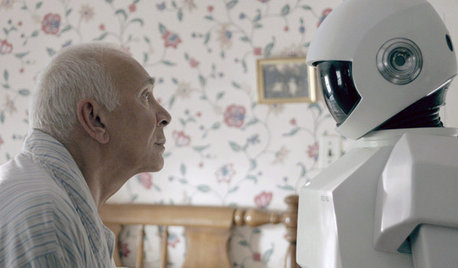
HOME TECHHome Tech: Where Is My Robot Housekeeper?
We haven't mastered the all-purpose humanoid house cleaner, but these gadgets make quick work of chores
Full Story


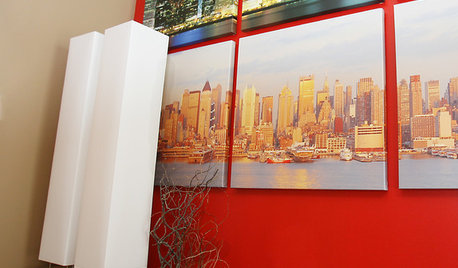

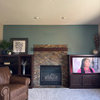
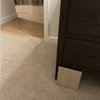

bpath